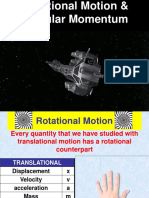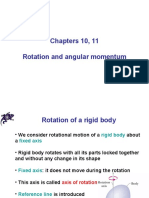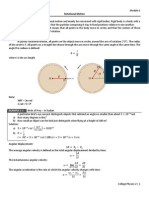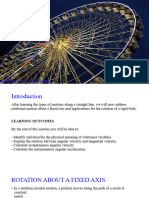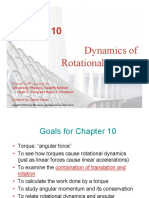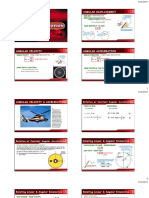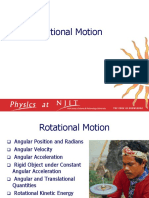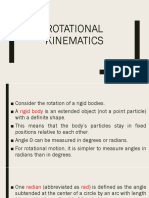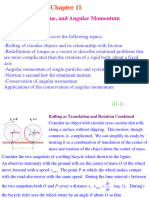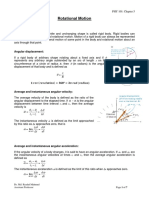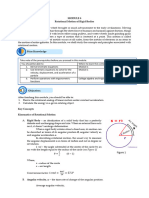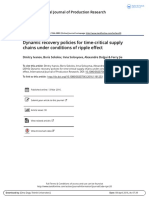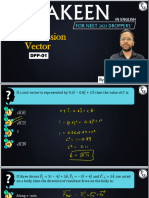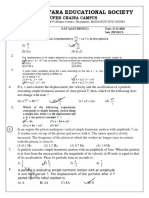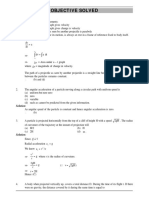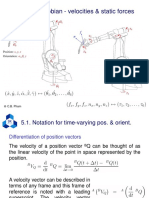0% found this document useful (0 votes)
92 views36 pagesPhys101 Lectures 16, 17, 18: Rotational Motion
* The pencil can be treated as a uniform rod for simplicity
* Mass of pencil = m
* Length of pencil = l = 0.16 m
* Moment of inertia of a uniform rod about its center of mass = 1/3ml^2
* Angular velocity at the bottom = ω = √(2gl/l) = √(2g) rad/s (using conservation of energy)
* Kinetic energy at the bottom = 1/2 Iω^2
= 1/2 * (1/3ml^2) * (√(2g))^2
= 1/6ml√(2g)
So the kinetic energy of the rotating pencil is 1/
Uploaded by
Aldo Setyawan JayaCopyright
© © All Rights Reserved
We take content rights seriously. If you suspect this is your content, claim it here.
Available Formats
Download as PDF, TXT or read online on Scribd
0% found this document useful (0 votes)
92 views36 pagesPhys101 Lectures 16, 17, 18: Rotational Motion
* The pencil can be treated as a uniform rod for simplicity
* Mass of pencil = m
* Length of pencil = l = 0.16 m
* Moment of inertia of a uniform rod about its center of mass = 1/3ml^2
* Angular velocity at the bottom = ω = √(2gl/l) = √(2g) rad/s (using conservation of energy)
* Kinetic energy at the bottom = 1/2 Iω^2
= 1/2 * (1/3ml^2) * (√(2g))^2
= 1/6ml√(2g)
So the kinetic energy of the rotating pencil is 1/
Uploaded by
Aldo Setyawan JayaCopyright
© © All Rights Reserved
We take content rights seriously. If you suspect this is your content, claim it here.
Available Formats
Download as PDF, TXT or read online on Scribd
/ 36




